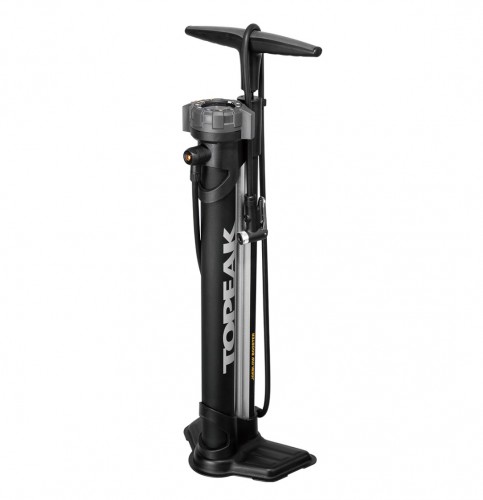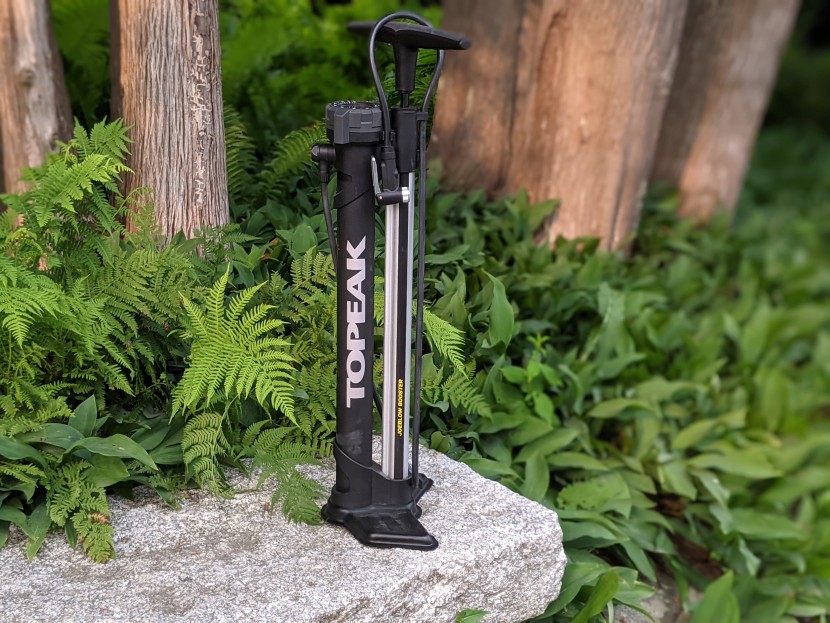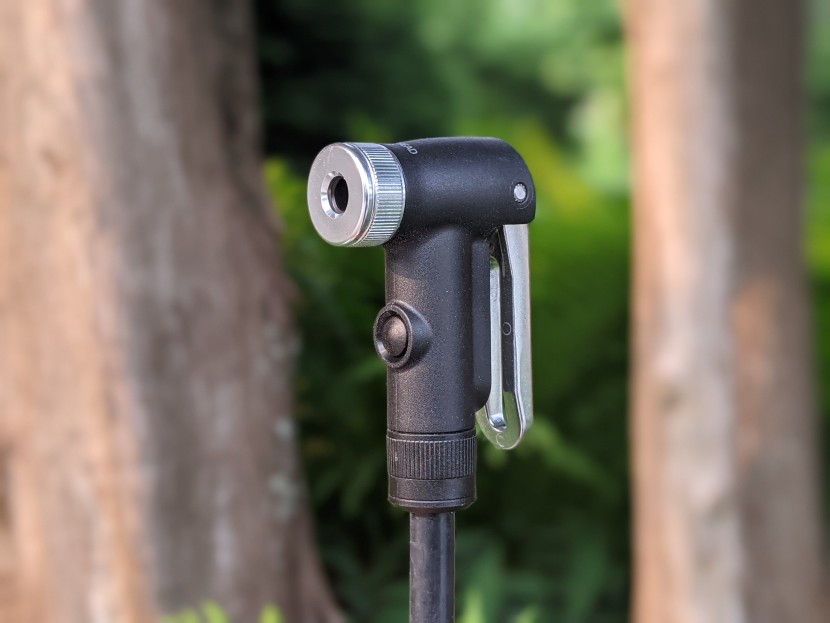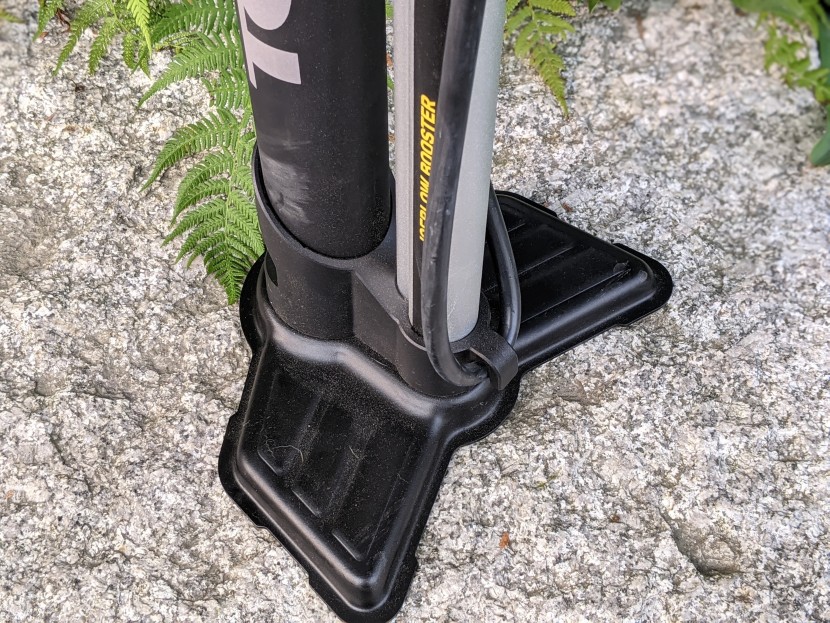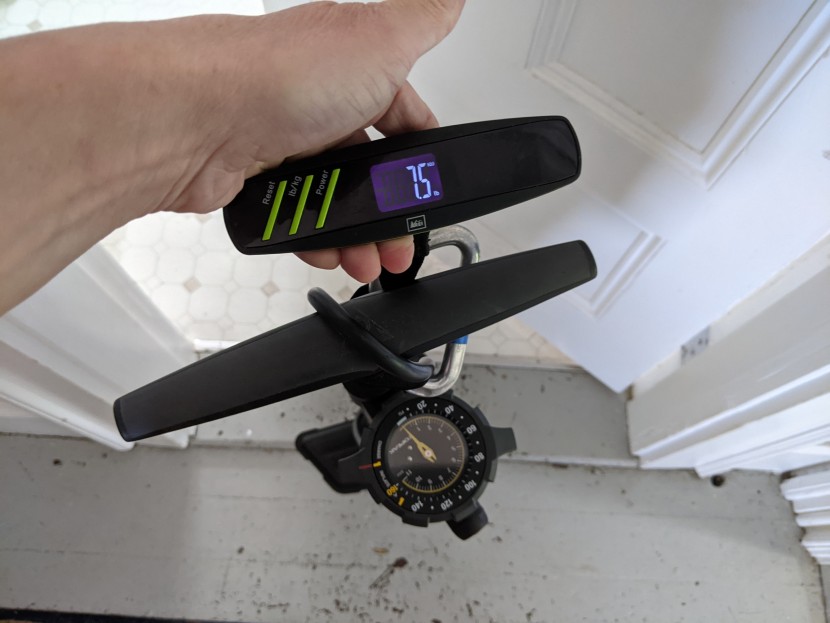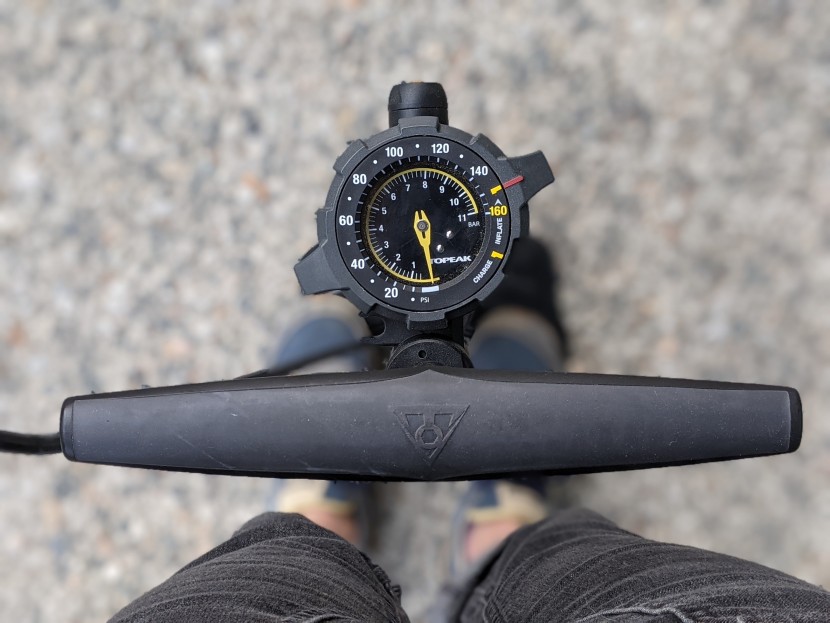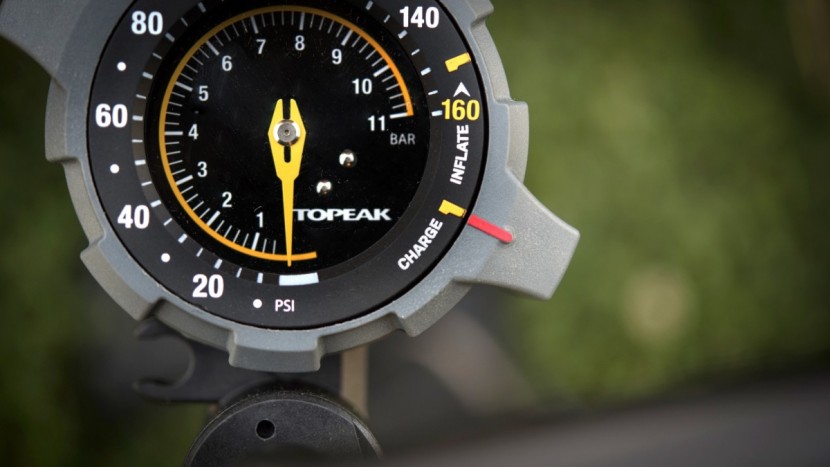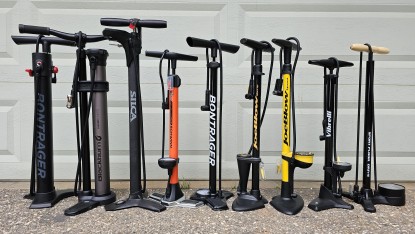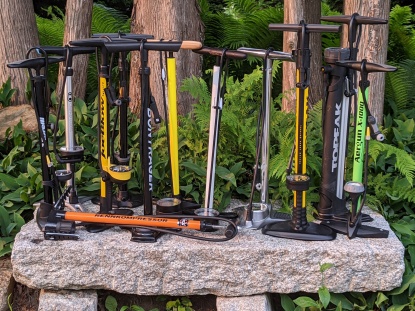Topeak JoeBlow Booster Review
Our Verdict
Our Analysis and Test Results
Despite the many advantages of tubeless tires, it can be a real drag when you're excited to slap some new rubber on your ride, and the bike shop is backed up with work and can't get you rolling without a wait. The JoeBlow Booster solves this problem with the capacity to store one liter of air at 160 PSI in an integrated high-pressure chamber that works just like an air compressor to seat tubeless tire beads. When not used for installing tubeless tires, the Booster functions in the same manner as a regular floor pump, albeit a bit heavier.
Ease of Attachment
The SmartHead on the Booster automatically adapts to accept both Presta and Schrader valves without the need to flip, unscrew, or otherwise manipulate the head. It works well with both valve types but can be harder to seat on Schrader valves when your tire is flat. We're pleased that this pump employs a strong metal locking lever. It's large, moves smoothly, and is easy to use. The portion of the head that inserts onto the valve and holds the internals secure is also alloy.
The 59-inch python of a hose on the Booster is longer than any other model we tested. The hose has an even greater effective length since it originates from the top of the pump. It has no trouble inflating tires set on a workbench or when the bike is suspended in a bike work stand. Pressing the SmartHead onto a Presta valve is easy, although you often need two hands to flip the lever without losing much air during attachment.
Inflation
When used as a regular floor pump (with the selector dial on inflate mode), the Booster does a good job inflating high-pressure tires. It only requires a couple more compressions to get a road tire up to pressure than the best options. A high-volume mountain bike tire takes much longer, requiring 30 compressions to take it from 10 to 30 PSI. This pump was the slowest in the test at that task. The pace feels casual, though. The road tires require more power, but a stiff plastic handle and super stable steel base transfer it effectively.
To seat tubeless tires with this pump, set the selector dial to charge and start pumping. Your goal is to raise the pressure in the accessory chamber to 160 PSI, giving it enough power to seat a tire bead. It's not that challenging until you hit about 120 PSI, then a glisten will likely appear on your forehead with the last dozen or so strokes.
Filling the chamber required an average of 50 pumps. Then you simply turn the mode selector dial back to inflate and the chamber releases its pressure. Assuming that satisfying ping, ping of rubber snapping into place against the rim is achieved, determining the final tire pressure is the next step. If the tire bead seated properly, but you need additional air to achieve a certain pressure rating, simply give the handle a few strokes, and the pump functions like a regular floor pump. If pressure is too great, it has an air release valve just below the gauge for minute pressure adjustments (and there's a second one on the nozzle.)
Stability
A wide, wing-shaped steel base measures nearly 10 inches across, allowing you to firmly plant your feet and blast away when filling the high-pressure chamber of the Booster.
The non-rubberized underside is best used outdoors on a surface you don't care much about marring. We recommend a mat or a towel for more delicate surfaces. We also appreciate that the plastic plate that attaches the pump and compressor barrel to the baseplate is sturdy. It's tall too, which increases height behind the gauge, providing further stability.
We also like the hose storage system, which tucks it out of the way while protecting the nozzle. The hose travels to the bottom of the pump to a clamp, then back to the top to another clamp, and finally over the handle to a final clamp on the far side. We mentioned that the hose is long, right? This system works well. And, though the flexible hose does take on the turns the storage system enforces, they aren't so entrenched that you have to fight with them to use it.
Accuracy
Few of the pumps we tested really blew us away with their accuracy. This pump was no different, often showing pressure differences up to 4 PSI when compared to our digital gauge readings, but only on lower pressure readings around 30 PSI. At higher pressure levels, around 80 and above, it performs much better.
This is unfortunate since this is a great option for mountain bikers devoted to tubeless tires. But it's hardly unique. Most pumps we tested could use a separate gauge to double-check their low-pressure accuracy, especially for fat or plus-sized tires. If you use tubeless road or cyclocross tires, you'll have better luck nailing your pressures with this pump.
Gauge
The top-mounting, analog gauge on the Booster was among our test favorites. The gauge is set high on the pump, and the PSI pressure values are printed in white along the perimeter, set against a black background. The Bar numbers are under the glass, still easy to see but subject to glare.
The gauge measures pressure up to 160 PSI (11 Bar), and, like the majority of pumps we tested, it isn't optimized to read lower pressures. The needle quickly speeds through the all-important 20s and 30s on its way to 160 PSI. Broad intervals plague precise readings. Each tick mark accounts for 5 whole PSI.
The gauge is surrounded by a selector dial that switches the pump between “charge” and “inflate” modes. Again, you turn the selector dial to charge to fill the accessory air chamber to 160 PSI and rotate it to inflate to blast the air into the tire to seat it in the rim. When the red line is set to inflate, the pump works like a traditional floor pump.
Should You Buy the Topeak Joe Blow Booster?
For those who regularly change tubeless tires at home, the Joe Blow Booster is a very useful tool for seating the bead that also functions relatively well as a regular floor pump. It's fairly stable with an easy-to-read gauge and a nice long hose. While it performed well in general, it was bested by the other model capable of seating tubeless tires in this round of testing, and it's also a bit more expensive. That said, we've had one of these pumps at GearLab HQ for several years and it still works well, so the expense may be justified for the home mechanic.
What Other Bike Pumps Should You Consider?
If you're after a pump capable of seating tubeless tires, the Bontrager TLR Flash Charger edged ahead of the JoeBlow Booster in our testing and will save you a little money too. If you're operating on a budget but still want a reliable pump, the Bontrager Charger gets the job done at a wallet-friendly price.


